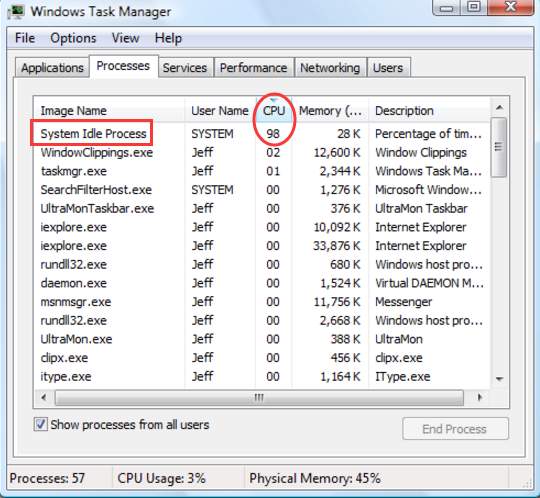
System Idle Process is a system process. If you see it taking high CPU usage (usually 98% and 99%), don’t be panic. If your PC runs normally, just leave it. If you want, read on to find more information about it. If your PC is slow down, you can try the methods in this post.
Why is System Idle Process taking high CPU usage?
Usually, System Idle Process high cpu usage is not a problem. The process runs in background and would measure how much idle capacity that has at any given time. The high percent of cpu indicates that a large amount of process power is not being used. If it is at 100, 99 or 98%, you may see nothing is running in background but the System Idle Process. In this case, just leave it alone.
What if your PC is slow down?
If your PC is running slowly, it could be a problem. You can try two methods below to resolve it.
Method 1: Disable some process at startup
If your computer is running Windows 10, you can follow the steps below to disable the processes at startup:
1) On your keyboard, press Win+R (the Windows logo key and the R key) at the same time to invoke the run box.
2) Type msconfig in the run box and click the OK button.
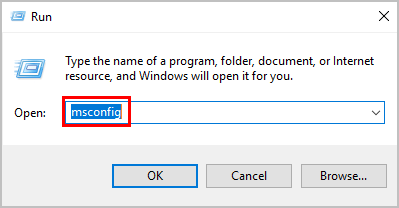
3) Click Open Task Manager.

4) Select one item that you don’t need to open at startup and click the Disable button.
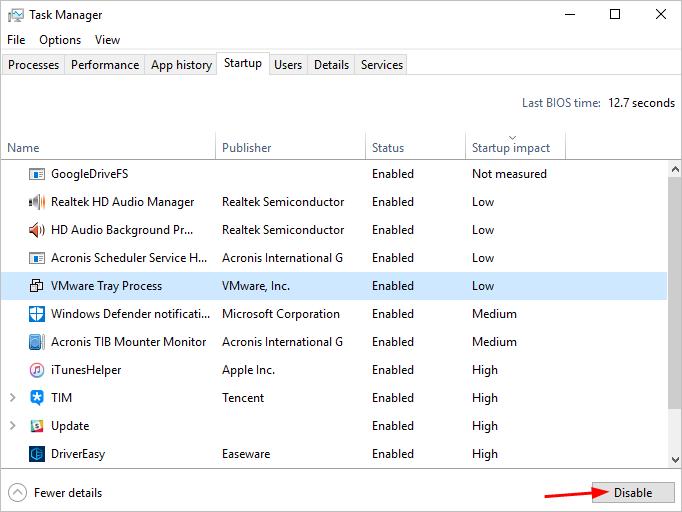
5) Repeat the Step 4 to disable all items that you don’t need to open at startup.
6) Check to see if your computer is still running slowly.
If your computer is running Windows 7, you can follow the steps below to disable the processes at startup:
1) On your keyboard, press Win+R (the Windows logo key and theR key) at the same time to invoke the Run box.
2) Type msconfig in the run box and click OK button.
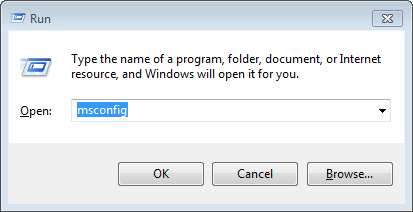
3) Click Startup tab, and Select the items that you don’t need to open at startup then click on Disable all button.
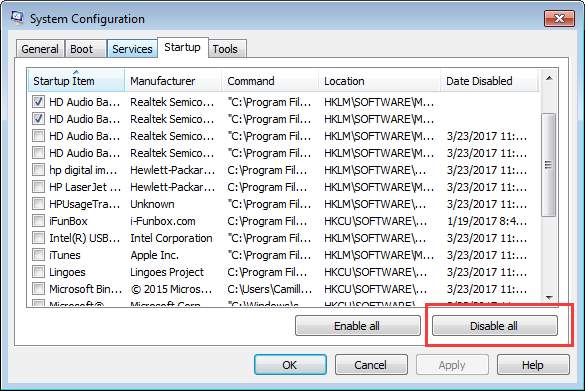
4) Click OK button.
5) Open your PC for the changes to take effect.
Method 2: Identify the driver that might be causing the problem
The problem might be caused by a specific driver or a hardware failure. So you can find out what the driver or hardware is. You can use RATT to create a log file to identify the problem driver. The RATT is an event tracing tool that Microsoft produced for developers. If you are not sure how to use it, you can google the methods.
After identifying which driver is the cause, disable it. Follow steps below to disable the driver.
1) Open Device Manager.
2) Expand the category and locate the problem driver (you can locate it from the device name). Right-click on the device then select Disable. Note the device won’t function after it is disabled.
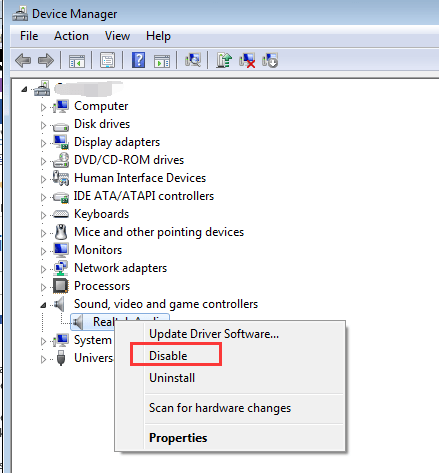
3) Click Yes to continue.
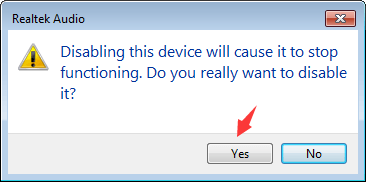
4) Check to see if the problem is resolved.
Method 3: Update the drivers
Slow PC performance could also be caused by outdated drivers. Before you move on next method, you can try updating the drivers.
If you don’t have time to update drivers manually, you can do it automatically with Driver Easy.
Driver Easy will automatically recognize your system and find the correct drivers for it. You don’t need to know exactly what system your computer is running, you don’t need to risk downloading and installing the wrong driver, and you don’t need to worry about making a mistake when installing.
You can update your drivers automatically with either the FREE or the Pro version of Driver Easy. But with the Pro version it takes just 2 clicks (and you get full support and a 30-day money back guarantee):
1) Download and install Driver Easy.
2) Run Driver Easy and click Scan Now. Driver Easy will then scan your computer and detect any problem drivers.
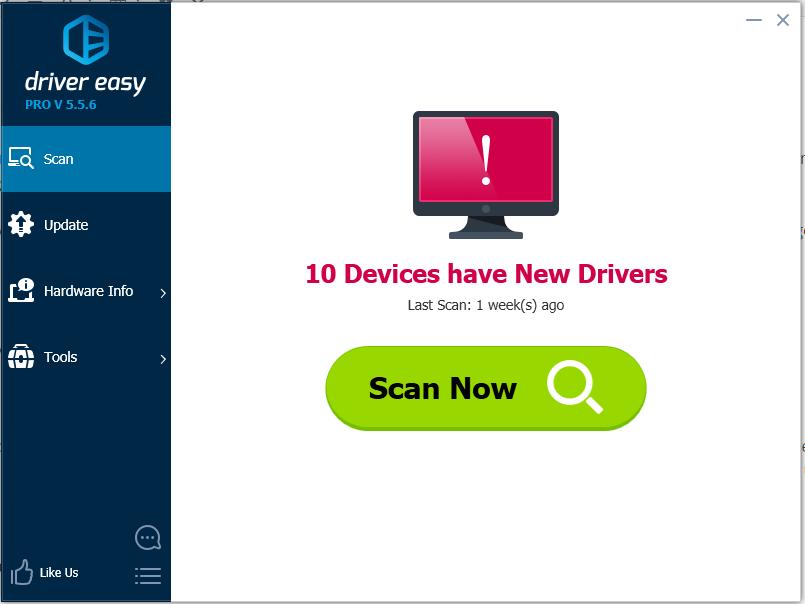
3) Click the Update button next to one device to automatically download and install the correct version of their driver (you can do this with the FREE version). Or click Update All to automatically download and install the correct version of all the drivers that are missing or out of date on your system (this requires the Pro version – you’ll be prompted to upgrade when you click Update All).
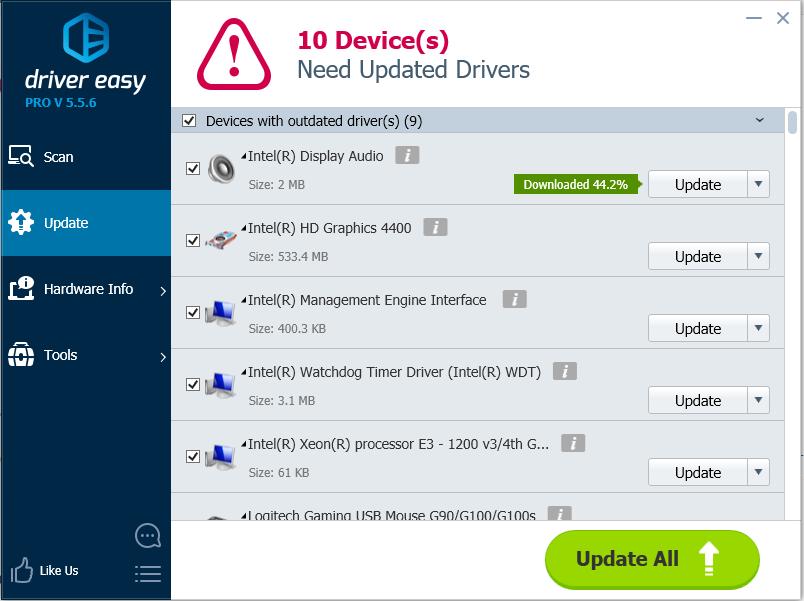
Method 4: Run antivirus software to check for any virus or malware
The computer could slowly if it is infected by virus or malware. So run the antivirus software to do a full scan on your computer.





